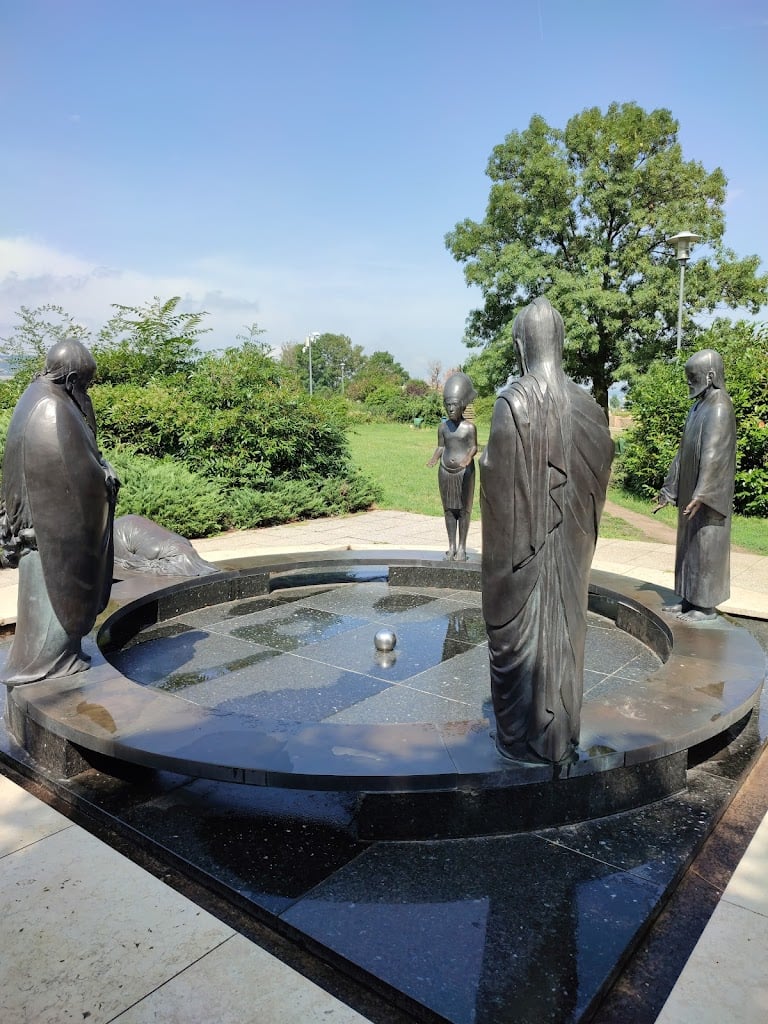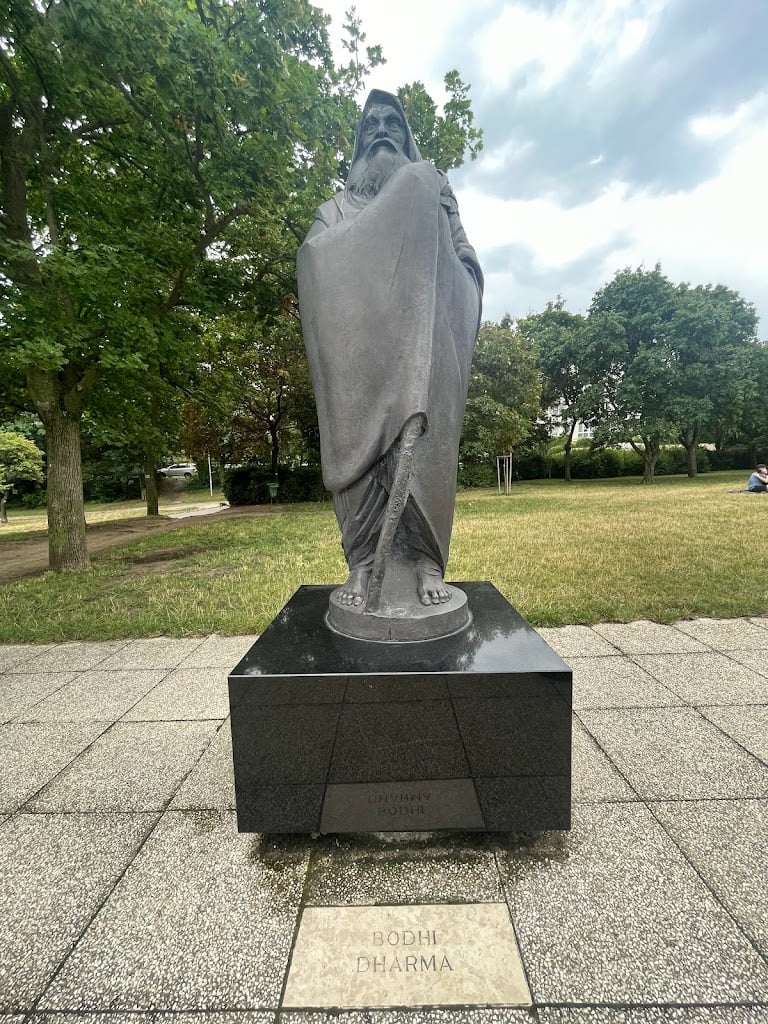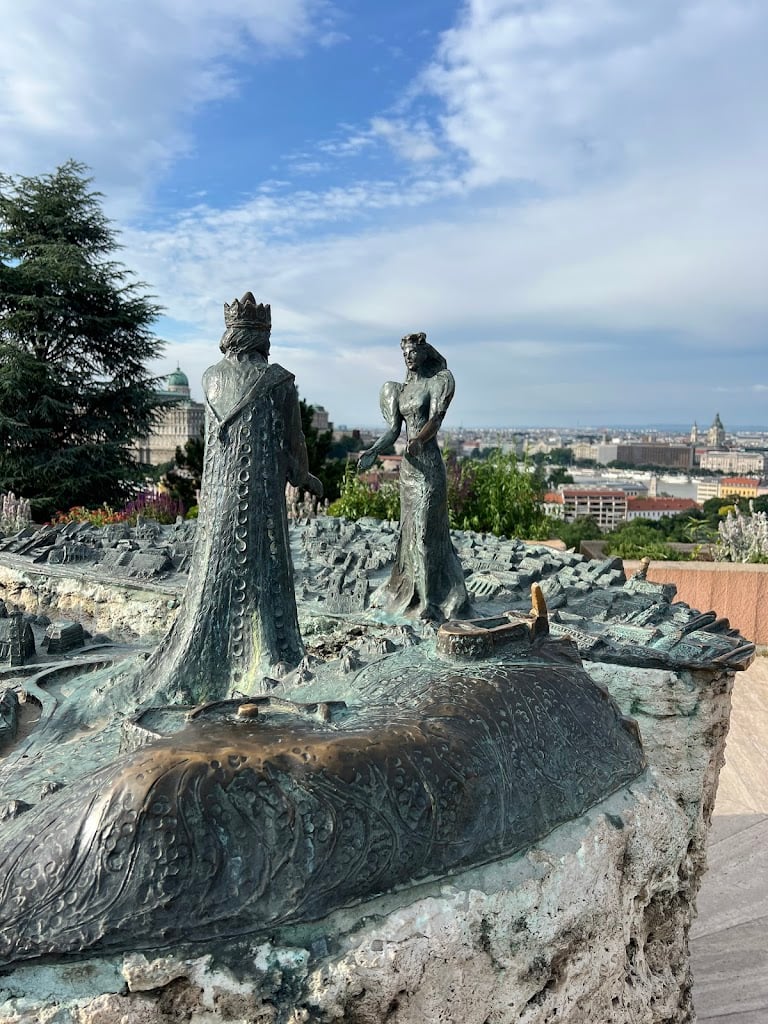Garden of Philosophers



Ask ThatchGPT
Suggest a local expert to plan my trip
Suggest an unique itinerary for my Budapest trip
What foods do Budapest locals eat
What are some true hidden gems in Budapest
Help me brainstorm trip ideas for Budapest
Help me plan a family-friendly trip to Budapest
What people say
Pedro Pereira
Available for hire
"In a secluded corner of Budapest’s Gellért Hill lies a unique and thought-provoking work of art known as "The Garden of Philosophy." Created by Hungarian sculptor Nándor Wagner in 1997 and relocated to its hillside spot in 2001, the sculpture brings together figures from the world’s major religions in a silent, symbolic gathering. Wagner’s goal was to promote mutual understanding and unity among the world’s religious traditions, and this peaceful installation is a testament to that vision.
The central element of the sculpture is an orb, around which five figures stand. These figures represent the founders of some of the world's major religious beliefs: Abraham, Jesus, Buddha, Laozi, and Akhenaten. The orb is about the size of a fist, symbolizing what is worshipped across these diverse faiths, and is the focal point of their silent gathering. Akhenaten, the ancient Egyptian pharaoh who introduced a form of monotheism centered around the sun god Aten, is an intriguing choice in this context. He stands slightly apart from the others, physically smaller and adorned with a large Egyptian war crown that gives him a distinct, otherworldly appearance.
Standing at the edges of this group are Mahatma Gandhi, Daruma Daishi (Bodhidharma), and Saint Francis, individuals whom Wagner saw as embodying spiritual enlightenment. Gandhi’s statue, recognizable to many, adds a modern, peaceful presence to the assembly.
Although Wagner initially envisioned a third circle of figures to include significant lawmakers like Hammurabi, Moses, and Justinian, he was unable to complete this part of the project before his death in 1997. The sculpture’s style reflects Wagner’s years spent in Japan, with an aesthetic that blends Eastern influences with global spirituality. In fact, another version of the installation was cast and displayed in the Japanese town of Mashiko.
Visitors to the site can also enjoy a striking view of Budapest from the hill, where they can find the personified statues of Prince Buda and Princess Pest. These figures represent the two historical cities that merged to form modern-day Budapest, adding another layer of symbolism to the already rich cultural tapestry of the area."
Read more in:
Mentioned in these guides
About Garden of Philosophers
Get the inside scoop on Garden of Philosophers from local experts, travel creators, and tastemakers. Browse genuine trip notes, Garden of Philosophers reviews, photos, travel guides, and itineraries from real travelers and plan your trip with confidence.
Address
Save this spot for later or start mapping out a new trip today
Try our AI Travel Assistant and get instant answers to any questions about your trip.
Ask ThatchGPT
